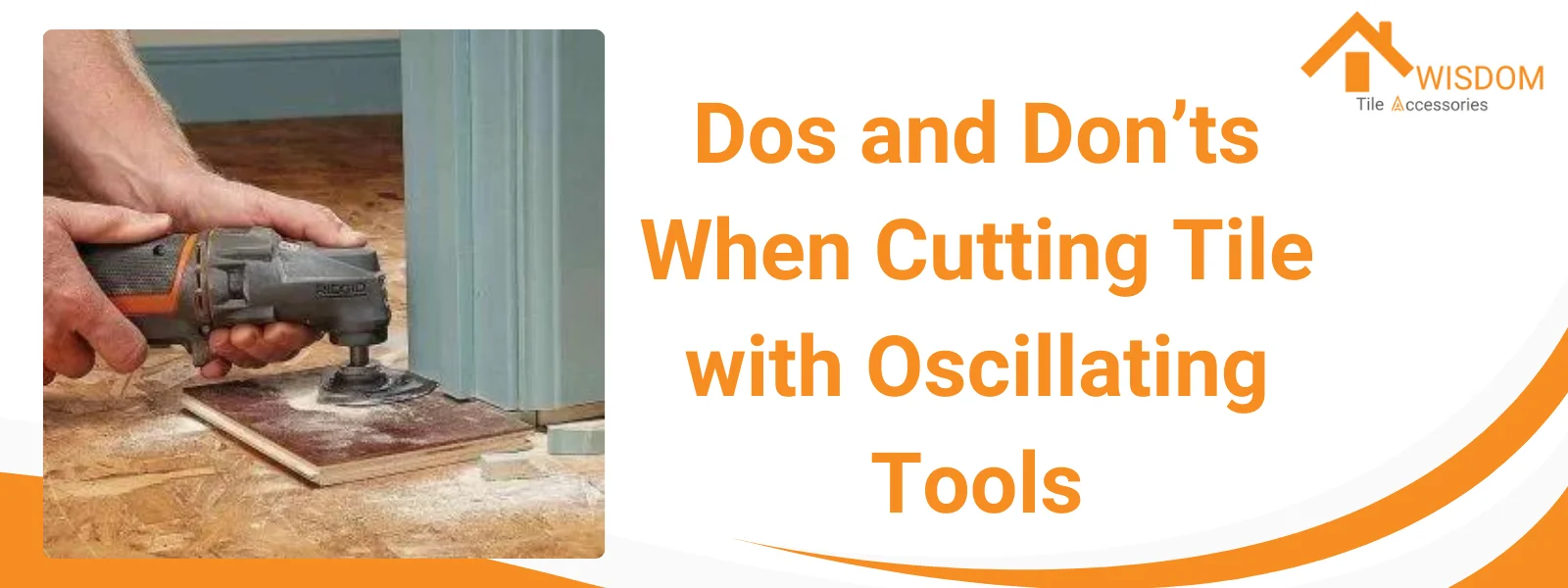Table 1: Dos and Don’ts When Cutting Tile with Oscillating Tools
Aspect | Dos | Don’ts |
|---|---|---|
Blade Selection | Use diamond or carbide-edged blades based on tile material | Avoid using incorrect blades for the tile type |
Tool Handling | Keep blade perpendicular; mark and score lines before cutting | Don’t rush; maintain steady, controlled movements |
Safety Measures | Wear safety gear; ensure ventilation; disconnect power when changing blades | Don’t neglect safety precautions or tool maintenance |
Usage | Ideal for intricate cuts and shaping edges | Don’t use as a sole replacement for all tile cutting tools |
Are you using an oscillating tool to cut tiles? Statistically, the oscillating multi tool has become the best choice for precise cuts on ceramic tiles, but using it correctly is not a simple matter. This guide has helped many DIYers successfully cut the tiles they want.
Whether you're planning to cut installed tile with an oscillating tool for the first time or looking to improve your skills, which is about cut tile with multi tool, this guide will provide the dos and don'ts to enhance your proficiency.

Understanding the Oscillating Tool
The oscillating tool, often referred to as a multi-tool, is a compact and versatile device that has revolutionized DIY projects and professional jobs alike. Its ability to perform a variety of tasks, including tile cutting, is what makes it a favorite among many.
What is an Oscillating Tool?
At its core, an oscillating tool is a handheld device that moves its blade in a back-and-forth motion – oscillating – at an incredibly high speed. It's this rapid oscillation that allows the tool to cut through a wide range of materials, including tiles. Despite its high power, the tool's motion is generally contained to the accessory only, making it easier to control and handle compared to other power tools.
Can an Oscillating Tool Cut Tile?
Absolutely! An oscillating tool, also known as a multi-tool, is a versatile and efficient option for cutting tiles. It's especially adept at making precise, small cuts on tile edges or creating holes in the center of tiles. Here's why it's a top choice for DIY enthusiasts:
- Types of Oscillating Tools: Choose between corded for consistent power or cordless for flexibility.
- Blade Selection: Use a diamond-edged or carbide-edged blade for clean cuts.
- Speed and Control: Adjust the oscillation speed for different tile types.
Remember, while an oscillating tool is great for specific cuts, it complements, rather than replaces, traditional tile cutting tools like manual cutters or wet saws. Discover more about leveraging this tool for your tiling projects in our comprehensive guide.
Types of Oscillating Tools Used for Cutting Tiles
There are mainly two types of oscillating tools available: corded and cordless. Both are capable of tile cutting with multi tool attachments.
Corded oscillating tools offer consistent power, making them ideal for larger projects or more frequent use. The trade-off is that they require a nearby power source and the cord can sometimes limit mobility.
On the other hand, cordless oscillating tools provide greater flexibility and can be used anywhere, making them excellent for cutting installed tile with an oscillating tool in more challenging locations. However, they rely on batteries which need to be recharged.
When it comes to tile cutting, it's best to choose an oscillating tool with a high oscillating angle and speed. This ensures a clean, smooth cut on your tiles.
Components of an Oscillating Tool
Understanding the different parts of your oscillating tool will enable you to use it more effectively for tasks like tile cutting and oscillating tool tile removal. Here are the main components:
- Power Switch: Most oscillating tools have a power switch located at the top or side of the tool for easy access.
- Speed Control Dial: This allows you to adjust the speed of the oscillation to suit different tasks.
- Tool Head: This is where you attach different accessories or blades based on the task at hand. For cutting tiles, you would typically use a diamond-edged or carbide-edged blade.
- Blade: The blade performs the cutting action. When looking to cut tile with an oscillating tool, using the right blade is crucial. A grout removal blade, for instance, is excellent for removing grout while a diamond blade is typically best for cutting tiles.
In conclusion, using an oscillating tool for cutting tiles can greatly simplify your task. However, the tool needs to be used correctly to ensure the best results. In the following sections, we'll explore the key dos and don'ts of using an oscillating tool to cut tiles.
Why Use Oscillating Tools for Tile Cutting?
When it comes to tile cutting, an oscillating tool is an exceptional choice. There are several reasons why this versatile tool stands out. Firstly, its compact design and precise control make it ideal for cutting tile with oscillating tool, particularly in tight spaces or for detailed cuts. Whether it's a straight cut, plunge cut, or flush cut, an oscillating tool can handle it.
Secondly, the oscillating tool's ease of use is a significant advantage, especially for beginners. In fact, even when it comes to cutting installed tile with an oscillating tool, the process is quite straightforward. The tool's fast side-to-side motion also minimizes dust production, leading to a cleaner working environment.

The Dos of Cutting Tile with Oscillating Tool
Choose the Right Blade
The blade is the heart of the oscillating tool when it comes to tile cutting. There's a wide range of blades available, but when planning to cut tile with an oscillating tool, you typically want to use a diamond-edged or carbide-edged blade.
Diamond blades are best for cutting through hard materials like porcelain or stone tiles. On the other hand, carbide blades are more suitable for softer ceramic tiles. Using the appropriate blade for your tile material will result in cleaner cuts and less waste.
Proper Positioning and Handling
When cutting tile with oscillating tool, positioning and control are vital. Ensure the blade is perpendicular to the tile during a straight cut. For curved cuts, it might require some practice to maintain the blade's position, but with time, it becomes easier. Holding the tool firmly can help maintain control and accuracy.
For better stability when cutting installed tile with an oscillating tool, it's advisable to mark your cut lines with a pencil and then score along this line with the oscillating tool before proceeding with the full cut.
Practice Safety Measures
Safety should never be compromised. Always wear safety gear such as safety glasses to protect your eyes from flying debris, and gloves to protect your hands. If cutting tiles indoors, ensure the space is well-ventilated to reduce dust accumulation. Always remember to disconnect your oscillating tool from the power source when changing blades to avoid accidental startups.
Regular Maintenance of Your Tool
Proper care and maintenance of your oscillating tool can significantly affect its performance and lifespan. After tile cutting with the multi tool, clean the tool and blades to remove tile dust and debris. Check for any signs of wear or damage on your blades and replace them if necessary. If using a corded tool, check the cord regularly for any damage.
In summary, using an oscillating tool can make tile cutting a more manageable task. However, it's essential to choose the right blade, handle the tool correctly, follow safety protocols, and keep your tool well-maintained. Following these tips can ensure successful tile cutting and prolong the life of your oscillating tool.
The Don'ts of Cutting Tile with Oscillating Tool
While cutting tiles with oscillating tool offers a range of benefits, certain pitfalls can hinder your progress or even potentially damage your tool or tiles. To ensure a smooth and successful operation, here are some crucial practices to avoid.

Avoid Forceful Pushing
When you're eager to get a job done, it can be tempting to apply excessive pressure to speed up the cutting process. However, when cutting tile with an oscillating tool, this approach can be counterproductive and potentially dangerous. Too much pressure can lead to blade damage or breakage, uneven cuts, or even injury.
An oscillating tool cuts through tile using high-speed vibrations, not brute force. Therefore, the key to efficient cutting is allowing the tool to do the work. Apply just enough pressure to keep the blade in contact with the tile and guide it along the cut line. This approach is especially important when cutting installed tile with an oscillating tool to avoid damaging surrounding surfaces.
Don't Ignore the Power Cord
For those using corded oscillating tools, ignoring the power cord can lead to unfortunate accidents. Tripping over the cord, cutting through it accidentally, or pulling the tool out of the socket are all potential hazards.
When using the tool, always be aware of where the cord is. Keep it away from the cutting path and secure any excess cord out of the way to prevent tripping. When cutting installed tile with an oscillating tool, be mindful not to trap the cord behind the tool.
Don't Skip the Manual
The user manual isn't just included for compliance purposes; it's a valuable source of information about your tool. Skipping the manual can result in improper usage, affecting the tool's performance and lifespan. It can also lead to safety risks if you're not aware of the tool's features and safety protocols.
Reading the manual provides insight into the tool's functions and how to use them effectively. For example, understanding how to adjust the oscillating speed can greatly improve your efficiency in tile cutting with the multi tool.
Don't Forget Regular Checks
Like any power tool, an oscillating tool requires regular checks to ensure it continues to operate effectively. Neglecting these checks can lead to decreased performance and potentially serious damage to the tool.
Regularly check the tool for any signs of wear or damage. Pay particular attention to the power cord on corded tools and to the battery on cordless ones. Check the condition of your blades and replace them as necessary. Ensure the blade attachment mechanism is functioning properly to avoid blades becoming loose during operation.
In conclusion, to make the most of your oscillating tool when cutting tiles, avoid these common mistakes. Remember not to force the tool, be mindful of the power cord, always read the manual, and carry out regular checks. Following these guidelines will enhance your tile cutting experience and ensure your oscillating tool's longevity.
Step-by-Step Guide: Cutting Tile with an Oscillating Tool
1. Preparation: Before starting, ensure a safe working environment. Wear safety gear, including goggles and gloves, and ensure there's good ventilation if working indoors.
2. Marking the Tile: Accurately mark the cutting line on the tile using a pencil or marker and a straight edge. This is crucial for precision.
3. Setting Up Work Area: Protect your work surface with a drop cloth to catch tile fragments and water droplets.
4. Choosing the Right Blade: Use a diamond-edged or carbide-edged blade, depending on the hardness of your tile material. Diamond blades are better for harder materials like porcelain, while carbide blades suit softer ceramic tiles.
5. Securing the Tile: Firmly secure the tile to your work surface to prevent it from moving during cutting. Masking tape can be used to keep it in place.
6. Blade Maintenance: Ensure your blade is sharp and in good condition. A dull blade can make inefficient cuts and may damage the tile.
7. Testing Torque and Tool Condition: Before starting, test your tool’s torque and ensure it’s functioning correctly. This helps in maintaining control over the cutting process.
8. Cutting the Tile: Begin cutting along the marked line with controlled movements. Let the tool do the work without applying excessive force to prevent blade damage and uneven cuts.
9. Monitor Progress: Regularly pause to check your progress and ensure you're following the marked line accurately.
10. Inspect and Finish: Once the cutting is done, inspect the edge of the tile and use sandpaper or a tile file to smooth any rough edges.
11. Tool Maintenance: After cutting, clean the tool and blade to remove debris. Regular checks and maintenance ensure longer tool life and better performance.
12. Practice and Experimentation: If you're new to this, practice on smaller tiles before attempting larger or more complex cuts. This helps in gaining confidence and skill.
13. Utilizing the Oscillating Tool as a Tile File: For fine-tuning and making small adjustments, you can use the oscillating tool as a tile file. This is particularly useful for smoothing out rough edges after the cut.
14. Understanding Glue Types: Know the difference between dry and wet glue for tile setting. Dry glue (thin-set mortar) is mixed with water and used for stronger bonds, whereas wet glue (mastic) is pre-mixed and better suited for smaller projects.
Conclusion
In the realm of home improvements and construction, tile cutting is often a necessary task. With its versatility and precision, an oscillating tool can make this job much more manageable. However, as with any power tool, it's crucial to know the dos and don'ts to ensure the best results and longevity of your tool.
Remember to choose the right blade for your tile material, position and handle the tool properly, and practice safety measures while working. Don't forget to maintain your tool regularly, especially after tile cutting with a multi-tool. On the other hand, avoid forceful pushing when cutting, be mindful of the power cord, read your tool's manual thoroughly, and conduct regular checks on your tool's components.
Cutting tile with an oscillating tool doesn't have to be a daunting task. With these tips in mind, you can effectively cut through tiles with ease and precision. Whether you're a seasoned professional or a DIY enthusiast, applying these practices can help ensure a smooth, efficient, and safe tile cutting experience.

References
For more information and tips on how to cut tile with an oscillating tool, cutting installed tile with an oscillating tool, or tile cutting with a multi-tool, check out the following resources:
1. "Can You Cut Ceramic Tiles With Oscillating Tools?" - This comprehensive guide delves into the basics of tile cutting with an oscillating tool, perfect for beginners.
2. "How To Cut Tile Using An Oscillating Tool: Step-by-Step Instructions" - This resource offers detailed instructions on cutting installed tiles, which can be quite tricky.
3. "Working Safely With Tiles" - This guide focuses on safety protocols when using oscillating tools, a must-read to ensure safe practices.
Remember, while this guide provides a good starting point, nothing beats hands-on experience. Don't be afraid to practice and learn as you go. With time, you'll be able to master the art of cutting tiles with an oscillating tool. Good luck on your tile cutting journey!
FAQ about Oscillating Tool
Can I cut tile with an oscillating tool?
Using an oscillating tool to cut tiles is very easy. Selecting different blades allows for the removal of various materials such as tiles, concrete, stone, and grout.
Will an oscillating tool cut tile?
An oscillating tool is indeed capable of cutting tile, making it a versatile choice for various home improvement tasks. Its rapid side-to-side movement allows for precise cuts, especially in tight or awkward spaces where larger tools might not fit.
For cutting tile, it's important to use the appropriate blade. Here a diamond-coated blade is typically recommended for tiles. In addition to the oscillating tool, consider having a measuring tape, a marker for precision in cutting, and safety gear like gloves and goggles.
Remember, while an oscillating tool is great for cutting, for larger tile removal projects, an angle grinder might be a more efficient option. Always prioritize safety and follow the tool's guidelines for optimal results.
Is using oscillating tool to cut tile worth it?
Using an oscillating tool to cut tile can be worth it in certain situations, particularly for making small, precise cuts or cutting tile that is already installed. It offers precision and is useful for cutting around outlets, corners, or other tricky areas.
How to cut ceramic tile with an oscillating tool?
1. Attach a tile-cutting blade to the oscillating tool.
2. Mark the cut line on the ceramic tile.
3. Secure the tile to prevent movement.
4. Start the tool at a low speed, increase gradually, and move the blade along the marked line.
Which blade cut tile with an oscillating Dremel tool?
For cutting tile with a Dremel oscillating tool, use a carbide or diamond-tipped blade specifically designed for tile cutting. Always remember to follow the manufacturer's instructions for blade installation and use.


